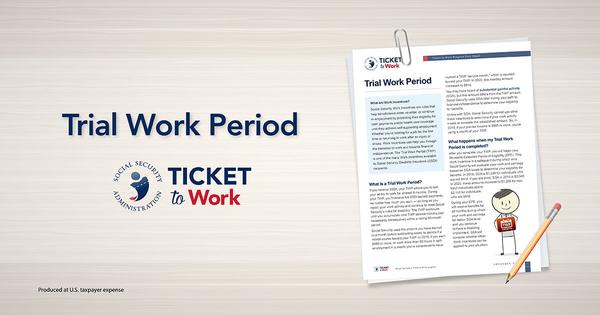What is a Social Security trial work period?
Social Security Disability Insurance (SSDI) is designed to help tide you over financially if you become unable to work due to a medical condition. But if your health improves, you may feel like you’re ready to start working again. A trial work period (TWP) gives you the opportunity to test the waters without losing your benefits.
A TWP is one of several work incentives the Social Security Administration (SSA) offers to help people transition back into the workforce after a period of disability. These serve as something of a safeguard for SSDI beneficiaries to see whether they can work consistently over time.

You are allowed to work and collect SSDI, but the SSA sets strict limits on how much you can earn. Benefits can end if you engage in what Social Security considers "substantial gainful activity" (SGA). In 2022, the SGA cap is $1,350 per month, $2,260 per month for the statutorily blind.
But Social Security recognizes that people collecting SSDI may experience fluctuations in their health, or find workplace accommodations, that encourage them to try working again. A TWP gives you nine months over a five-year period in which you can earn any amount of income and still receive your SSDI payments.
How it works
In 2022, Social Security counts a calendar month toward your trial work period if you earn more than $970 before taxes. If you are self-employed, working more than 80 hours in a month counts as a TWP “service month,” even if you don’t exceed the income threshold.
The nine months don’t have to be consecutive. Say, for example, that after a year on SSDI you get a part-time job. You earn $1,000 the first month, $800 each of the next three months, then $1,000 again. Social Security will consider you to have used up two of your nine trial months.
You don’t have to enroll in a TWP. Rather, Social Security tracks your months of service when you report your wages or self-employment activity, as is required of disabled beneficiaries. The TWP ends once you’ve accumulated nine months of service within a rolling 60-month period, or when Social Security determines you are no longer disabled.








